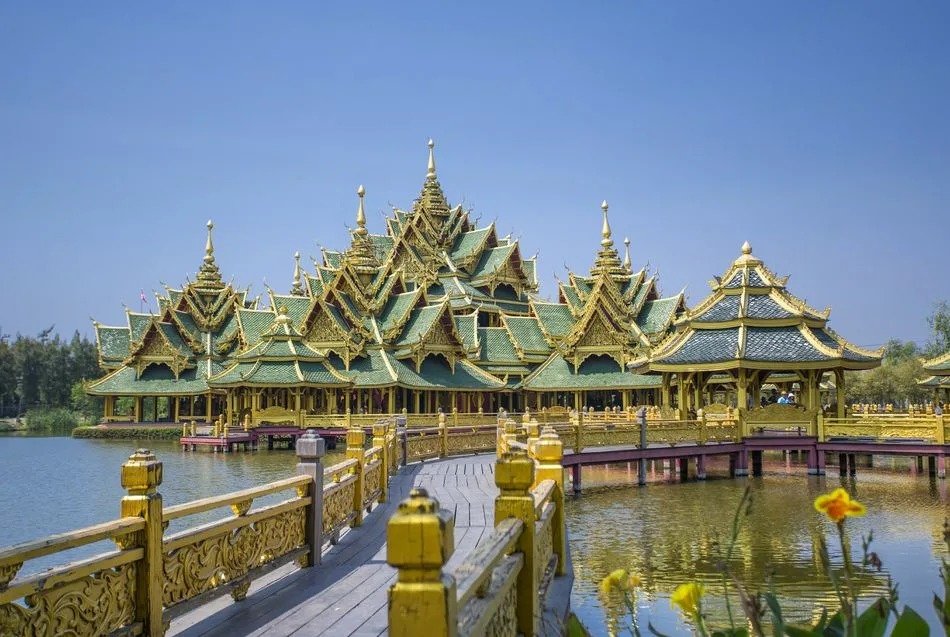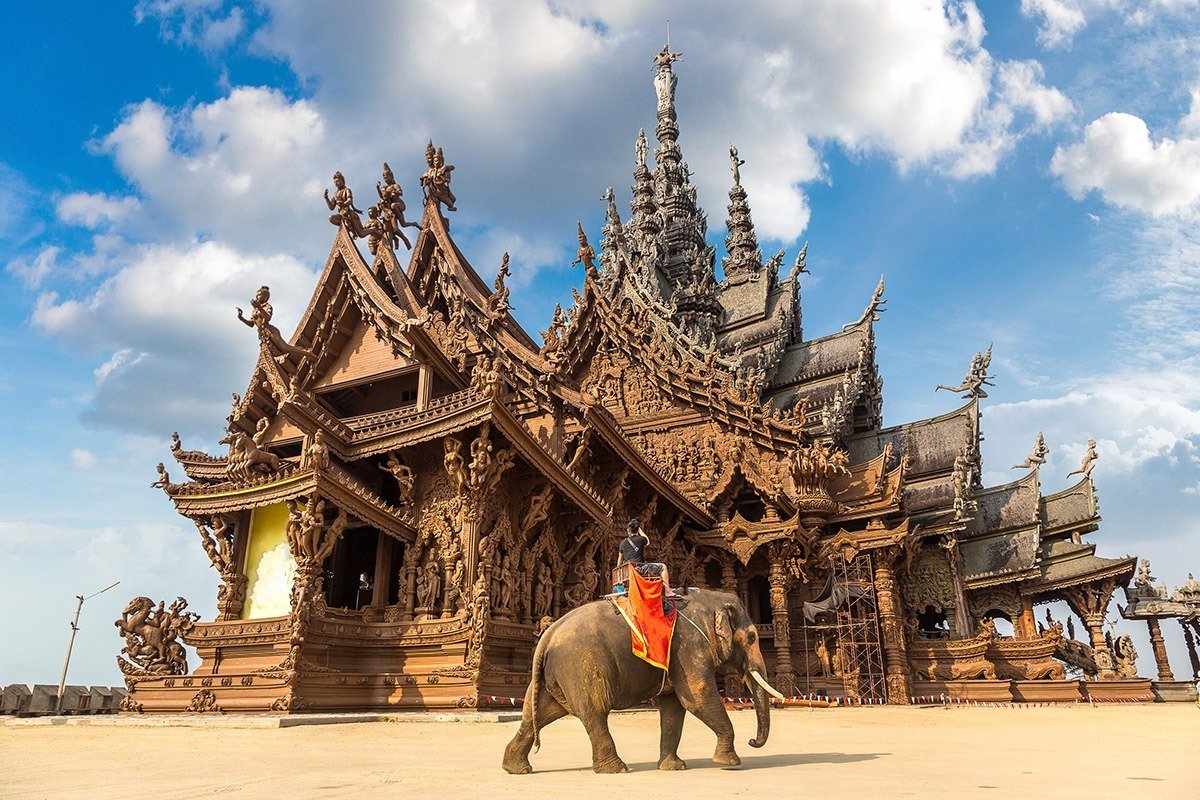Thailand is a captivating country filled with centuries-old traditions, intricate customs, and spiritual practices that provide a rich cultural experience for visitors. Among its most treasured cultural landmarks are Thailand temples, which serve as historical sites and places of worship. This guide explores Thailand’s most revered temples, vibrant festivals, and the unique traditions that shape Thai culture. Let’s take a journey through the heart of Thailand’s spiritual and cultural heritage.
Discover the best tours in Thailand at exclusive prices with thai adventure club
Introduction to Thailand temples
Thailand’s cultural landscape is shaped by centuries of Buddhist influence, with Thailand temples playing a central role in daily life. The nation’s temples, known as “wats,” are often the heart of the community and serve as places of worship and spaces for social gatherings, festivals, and learning. With architecture that reflects the beauty of Thai craftsmanship, these temples are a must-visit for anyone interested in exploring Thailand’s spiritual and historical roots.
Cultural tours in Thailand are the perfect way to gain insight into the country’s spiritual traditions, as they offer visitors an up-close experience of temple rituals, festivals, and age-old customs. As you tour Thailand temples and participate in local traditions, you’ll witness the deep-rooted respect Thai people have for their religion and cultural heritage.
Find out now: Top 10 destinations in Thailand
2. Top Temples to Visit in Thailand for a Cultural Experience
Thailand boasts a myriad of temples, each with unique architectural styles, historical significance, and spiritual importance. Here are a few iconic Thailand temples that offer a deep dive into the country’s cultural richness:
- Wat Phra Kaew (Temple of the Emerald Buddha): Located in Bangkok, this is Thailand’s most sacred temple and home to the revered Emerald Buddha. The intricate design of Wat Phra Kaew and its surrounding structures is a masterpiece of Thai architecture.
- Wat Pho (Temple of the Reclining Buddha): Also in Bangkok, Wat Pho is famous for its giant reclining Buddha statue and its historical significance as one of Thailand’s oldest temples. It’s also known as the birthplace of traditional Thai massage.
- Wat Arun (Temple of Dawn): Situated along the Chao Phraya River, Wat Arun’s iconic spires make it one of the most photographed temples in Thailand. Visiting at sunrise or sunset offers an especially magical experience.
- Wat Rong Khun (White Temple): Located in Chiang Rai, this unconventional and modern temple is unique for its white façade and intricate, symbolic details, blending Buddhist and modern art.
- Wat Phra That Doi Suthep: Overlooking the city of Chiang Mai from a mountain, this temple is both a pilgrimage site and a breathtaking viewpoint. The ornate architecture and the panoramic view make it one of the most visited Thailand temples.
These temples showcase a blend of traditional and contemporary styles, offering insight into Thailand’s rich cultural history. A visit to these landmarks allows you to experience firsthand the beauty of Thailand temples and their significance.

3. Traditional Thai Festivals and Celebrations You Shouldn’t Miss
Thailand’s vibrant festivals are a reflection of its spiritual roots and cultural diversity. Many of these celebrations are linked to Buddhism and are centered around Thailand temples, where the local community gathers to observe rituals and ceremonies. Here are a few must-experience festivals:
- Songkran (Thai New Year): Celebrated in April, Songkran is a joyful festival known for its water fights and traditional rituals. Many people visit temples to offer food to monks and pay respects to their ancestors.
- Loy Krathong: Held in November, Loy Krathong involves floating small baskets, or “krathongs,” on rivers and lakes to pay respects to the water goddess. Cities like Chiang Mai and Sukhothai hold grand celebrations near temples, adding a serene beauty to the festival.
- Yi Peng Lantern Festival: Coinciding with Loy Krathong in Chiang Mai, this festival is famous for releasing thousands of lanterns into the sky. The temples in the region organize activities, and the sight of illuminated lanterns against the night sky is magical.
- Visakha Bucha Day: This Buddhist holiday celebrates the birth, enlightenment, and death of Buddha. It is observed at Thailand temples across the country, with ceremonies, chanting, and candlelit processions.
Participating in these festivals provides a deeper understanding of Thai beliefs and traditions. The festivals often include temple visits, giving you a chance to observe how locals engage with Thailand temples during these important events.
Exploring Thailand hidden gems in 2024
4. The Role of Buddhism in Thai Culture and Daily Life
Buddhism plays a central role in Thai society, influencing art, education, ethics, and family life. Thailand temples are often the focal points of communities, where people gather not only to pray but also to celebrate important life events like weddings, ordinations, and holidays.
Monks, who reside in these temples, are highly respected in Thai society. Many Thai men spend time as monks during their lives, as it’s a common practice to ordain as a monk for a short period to earn merit for oneself and one’s family. Temples also function as places for community services, offering spaces for meditation, guidance, and support for those in need.
By visiting Thailand temples, tourists gain insight into Buddhism’s influence on Thai culture and the values of mindfulness, compassion, and respect that are prevalent in Thai society.
5. Guidelines for Respectful Visits to Thai Temples
When visiting Thailand temples, it’s essential to follow local customs and etiquette out of respect for the sacredness of these places. Here are some guidelines to ensure you show the appropriate respect:
- Dress Modestly: Both men and women should cover their shoulders, arms, and legs when entering a temple. Many temples provide scarves or sarongs for visitors who may need extra coverage.
- Remove Shoes: It’s customary to take off your shoes before entering the main worship areas within the temple.
- Keep Quiet: Temples are places of worship and contemplation, so maintaining a quiet demeanor is important.
- Avoid Pointing Feet at Buddha Statues: In Thai culture, the feet are considered the lowest part of the body. Avoid pointing your feet directly at any Buddha statues or people.
- Ask for Permission Before Taking Photos: While most temples allow photography, some areas may have restrictions. Always look for signs or ask for permission if you’re unsure.
By following these simple guidelines, you can respectfully experience Thailand temples and engage with the local culture.
6. Local Thai Traditions and Customs to Experience Firsthand
Beyond temple visits, Thailand’s traditions extend to everyday customs that are fascinating to experience. Many of these customs are tied to Buddhism and are practiced in Thailand temples. Here are a few that are worth exploring:
- Making Merit: A common practice in Thailand, making merit involves acts of kindness or donations to temples, believed to bring good fortune. Visitors can join locals in making merit by offering alms to monks in the morning.
- Thai Greeting (Wai): The “wai” is a traditional Thai greeting where the hands are placed together in a prayer-like gesture. Learning to wai and understanding its variations for different occasions is a way to show respect in Thai culture.
- Meditation Classes: Many temples offer meditation classes, providing an introduction to mindfulness and Buddhist teachings. This practice can help deepen your understanding of Thai spirituality.
These traditions are integral to Thai life, and observing them gives visitors a well-rounded experience of the values and beliefs upheld in Thailand temples and beyond.
7. Best Cultural Tours for Exploring Temples and Traditions in Thailand
For a more immersive experience, consider joining a cultural tour that focuses on Thailand temples and traditions. Many tour operators offer guided visits to temples, festivals, and cultural landmarks, providing expert insights along the way. Here are some popular cultural tours:
- Bangkok Temple Tour: This tour typically includes visits to Wat Phra Kaew, Wat Pho, and Wat Arun, giving an in-depth look at Bangkok’s most iconic temples.
- Chiang Mai Temples and Crafts Tour: In Chiang Mai, this tour combines temple visits, such as Wat Phra That Doi Suthep, with workshops on local crafts like pottery and silk weaving.
- Ayutthaya Historical Park Tour: Ayutthaya’s ancient temple ruins offer a glimpse into Thailand’s past. This UNESCO World Heritage Site is filled with historical temples and statues that reflect the kingdom’s former glory.
- Floating Market and Temple Tour: Combine a visit to a floating market with a trip to nearby temples. This tour gives insight into traditional Thai commerce alongside spiritual landmarks.
By joining these tours, you can delve deeper into Thailand temples and the country’s diverse cultural heritage, guided by knowledgeable experts who bring each location to life.
Conclusion
Exploring Thailand temples and traditions offers an enriching experience that goes beyond sightseeing. From Bangkok’s grand temples to Chiang Mai’s serene sanctuaries and Ayutthaya’s ancient ruins, Thailand’s spiritual sites reveal the heart of Thai culture. These temples, along with traditional festivals and local customs, provide travelers with a profound understanding of Thailand’s history and values.
Whether you’re visiting during a festival or simply observing a temple’s daily rituals, Thailand’s cultural tours provide unforgettable experiences. Soak in the beauty, participate in traditions, and connect with the warm hospitality of Thailand’s people. A journey through Thailand temples is more than a visit—it’s a glimpse into the soul of Thailand.
Follow us on:
- Facebook: Thai Adventure Club
- Instagram: thaiadventureclub


Comment (0)